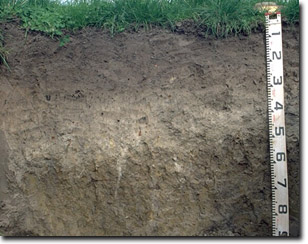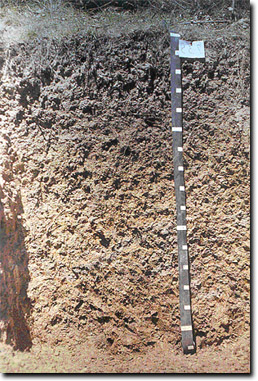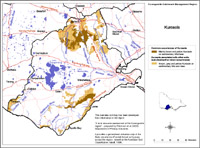Kurosols
Kurosols (Australian Soil Classification) have a strong texture contrast between loamy surface (A) horizons and clayey subsurface (B) horizons. The subsoils are strongly acid i.e. pH 5.4 or lower.
Brown and yellow Kurosols are most prevalent on the sedimentary hills and rises to the south of Ballarat and on some of the less steep hills in the Otway Ranges, to the north of Lorne. They are most likely to occur in areas with average annual rainfall of over 600 mm.
|
Kurosols in the Corangamite Region This broad scale map presents an overview and should only be used as a general indication of the distribution of Kurosols in the Corangamite Region. It shows areas where Kurosols are most likely to occur within the region. Note that other soil types may also occur within these mapped areas. This map has been developed from work undertaken by Robinson et al. (2003) as part of the Corangamite Land Resource Assessment project. This work utilised existing surveys, remote sensing information and additional field-work to develop an updated 1:100 000 scale soil/landform coverage across the region. Soils are difficult to map at this broad scale because of their diversity. Even in relatively small areas a number of soils may occur, which relate to differences in topography and landscape position. Variation in some of the major soil profile properties can also occur within these mapped areas. Any agricultural enterprise should be based on a proper on-site assessment of the soil and landscape. A number of soil surveys have been completed in this region at varying scales and intensity. However, in some areas very little soil survey has taken place. See the Soil and Land Survey Directory for details. |
 Brown Kurosol near Gerangamete. |  Bleached-Sodic, Magnesic, Brown Kurosol. |



